The transformation of a caterpillar into a pupa into a butterfly/moth is one of the biggest miracles in nature 🙂
Jan S, Fellow blogger and hiker
A chance encounter with a very green and plump caterpillar led to two weeks of larva-sitting, to observe and document the metamorphosis process.
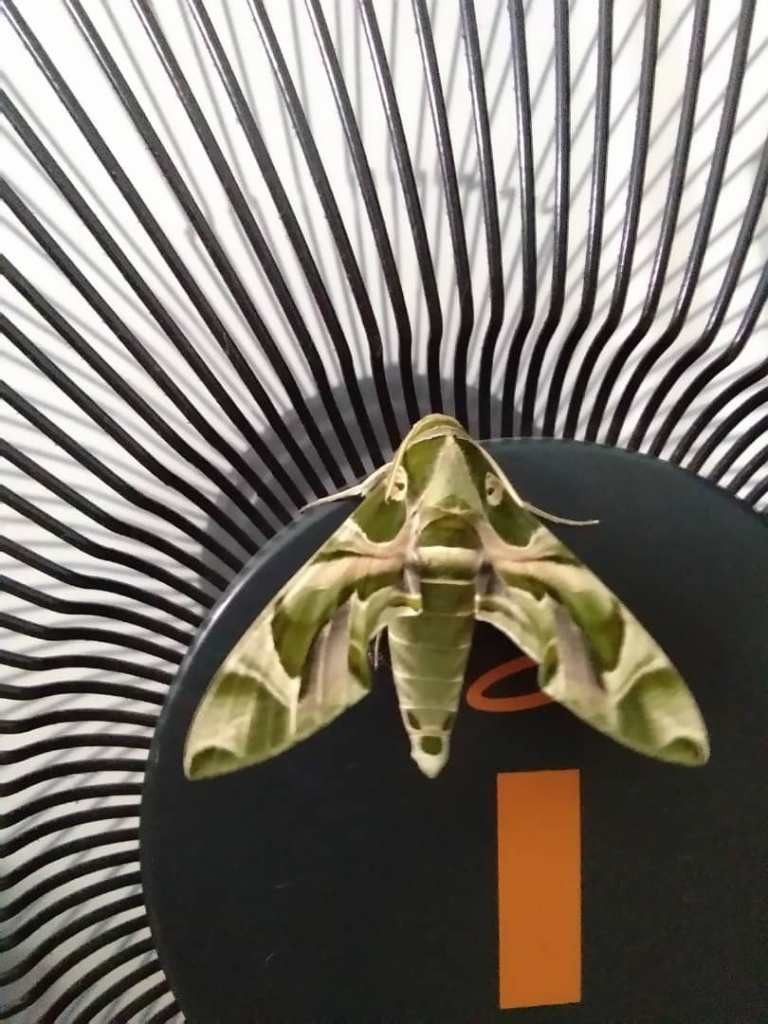
Oleander Hawkmoth
Daphnis Nerii
Identifying the species was surprisingly easy,
as the adult image matched an earlier picture I had taken on 15 January 2020.
Oleander Hawkmoth perched quietly on the fan in the bedroom.
I spent the next hour reading up on the metamorphosis timeline and viewing videos on how to rear it through from caterpillar to moth.
The journey of discovery has been very engrossing and educational for me. I hope you enjoy reading about the transformation, as much as I did, documenting it.
1. Larval Stage
June 2
The caterpillar was first spotted at lunch time on the driveway.
Later in the evening, the larva continued foraging actively, covering a lot of ground as it wandered about.
Spotting two other caterpillars chomping away merrily on a nearby potted plant was beyond my expectations. I immediately named the trio Huey, Dewey & Louie.
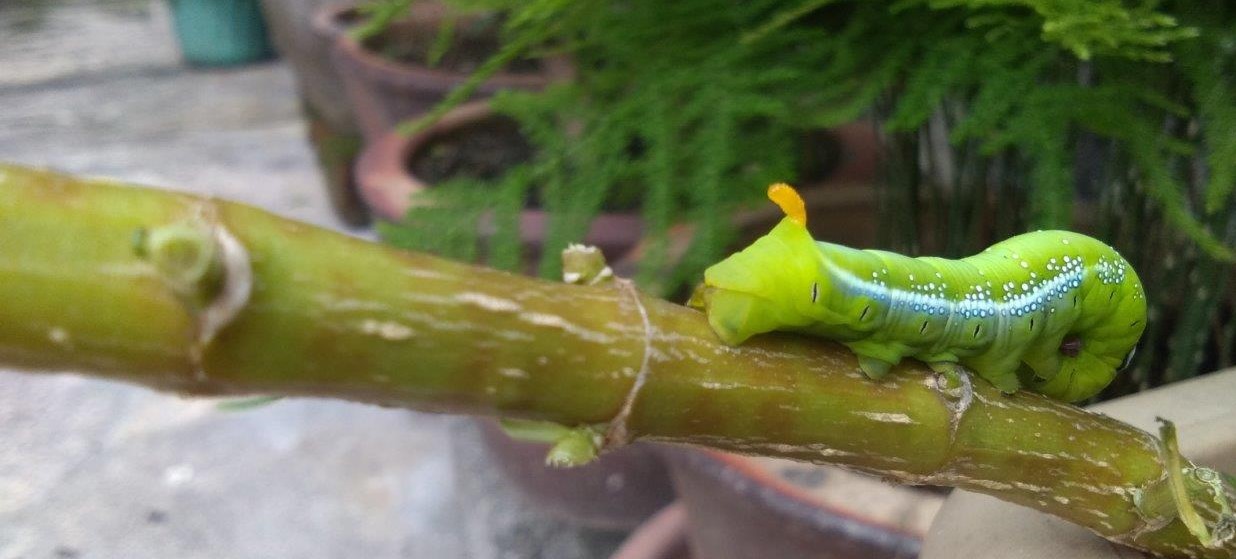
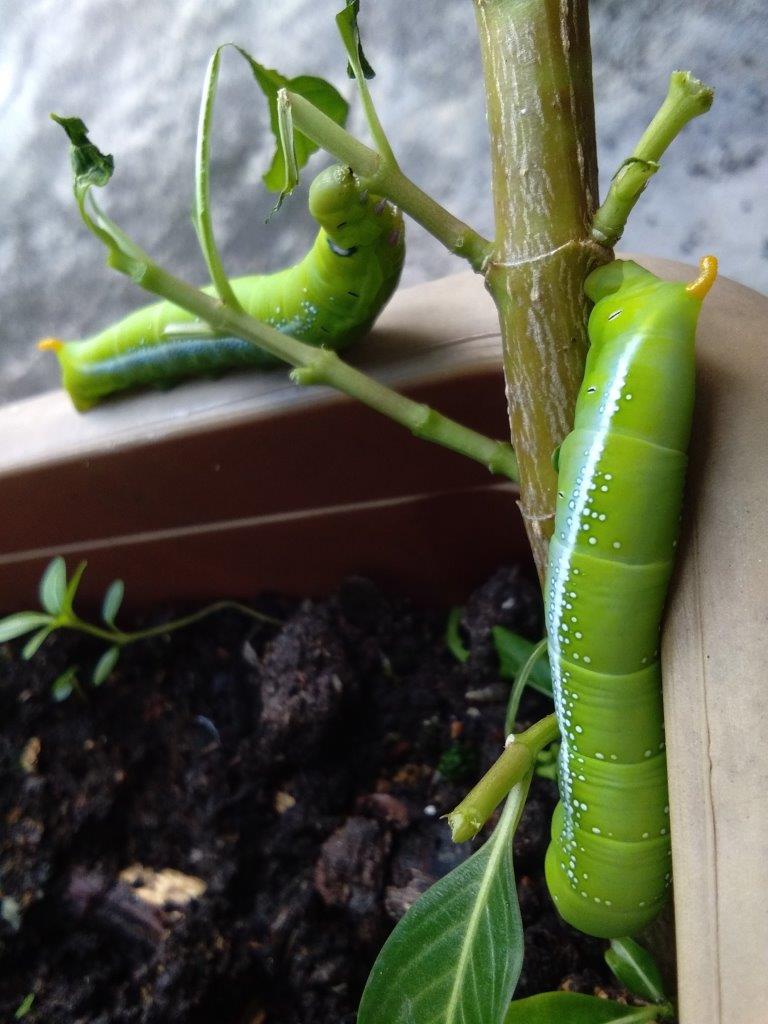
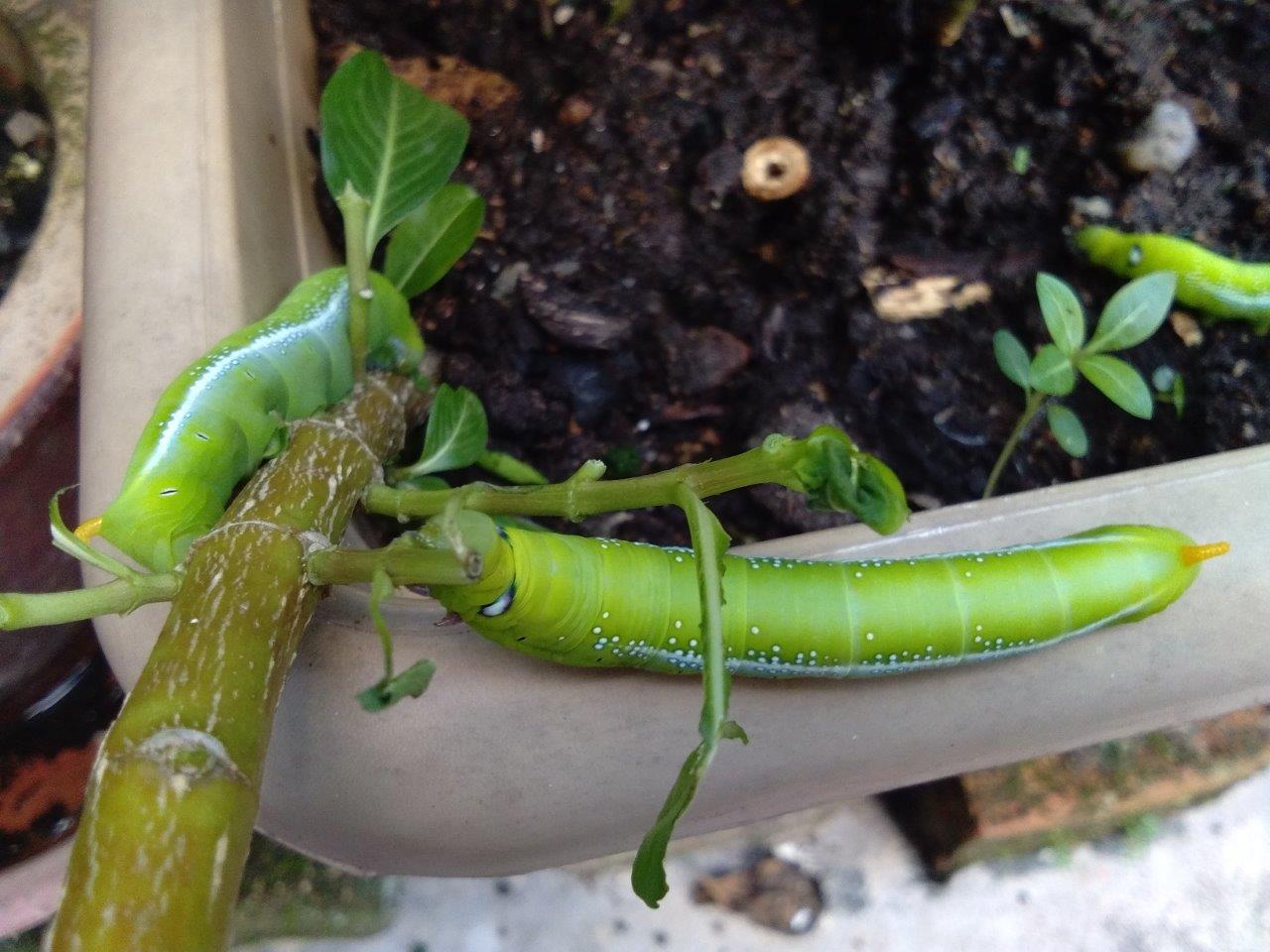
Based on the body markings, Huey, Dewey & Louie were in the fifth and final instar :
– plump and green
– distinctive light blue eyespots near the head
– band of white and pale blue lines on both sides, fringed by a scattering of white dots
– thin black lines develop below the blue and white streaks
– orange-yellow bulbous tail horn
The Madagascar periwinkle (Catharanthus roseus) host plant has been stripped bare after almost 3 weeks of frenzied feeding by the larvae.
June 3
That morning, it took a while to locate all three caterpillars. Louie, the baby of the lot was only sighted late in the afternoon.
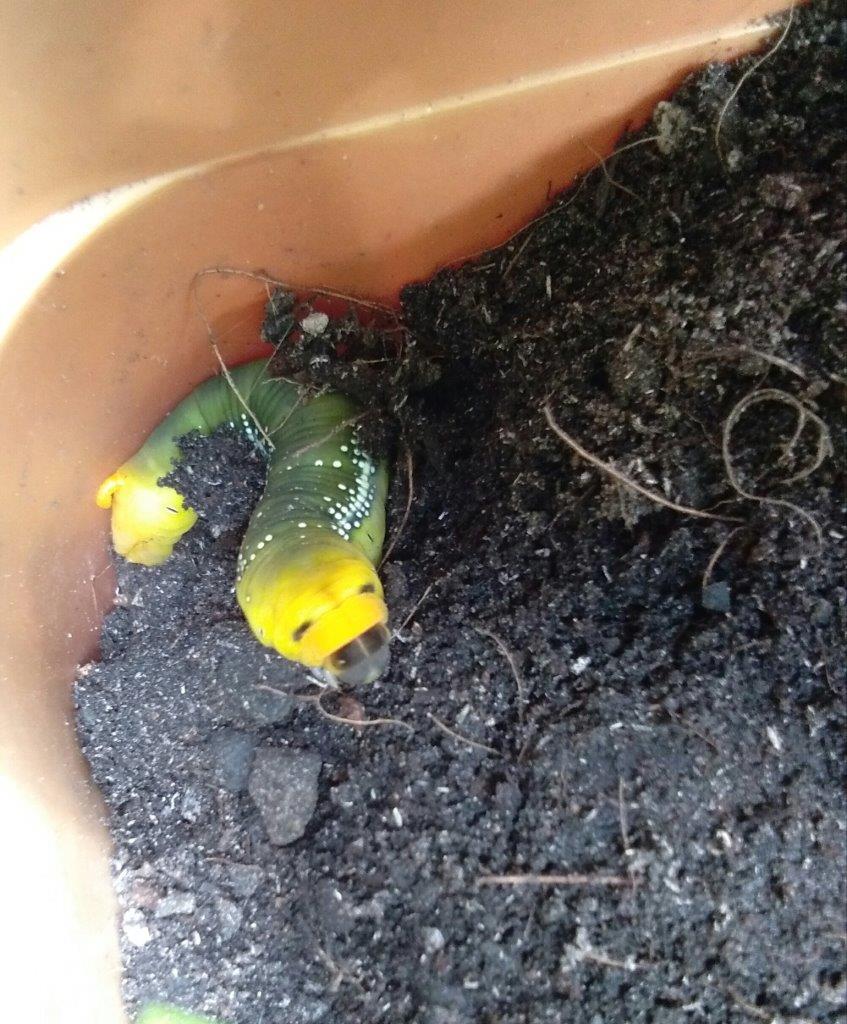
Prepupation
Huey had turned a darker green, making the white freckling on the body stand out more prominently.
The larva started moving around, burrowing in the soil.
Seeing Dewey wandering about aimlessly, I picked it up to return it to the host plant. By unintentionally threatening it, I managed to observe the startling blue false eyes clearly as they got bigger.
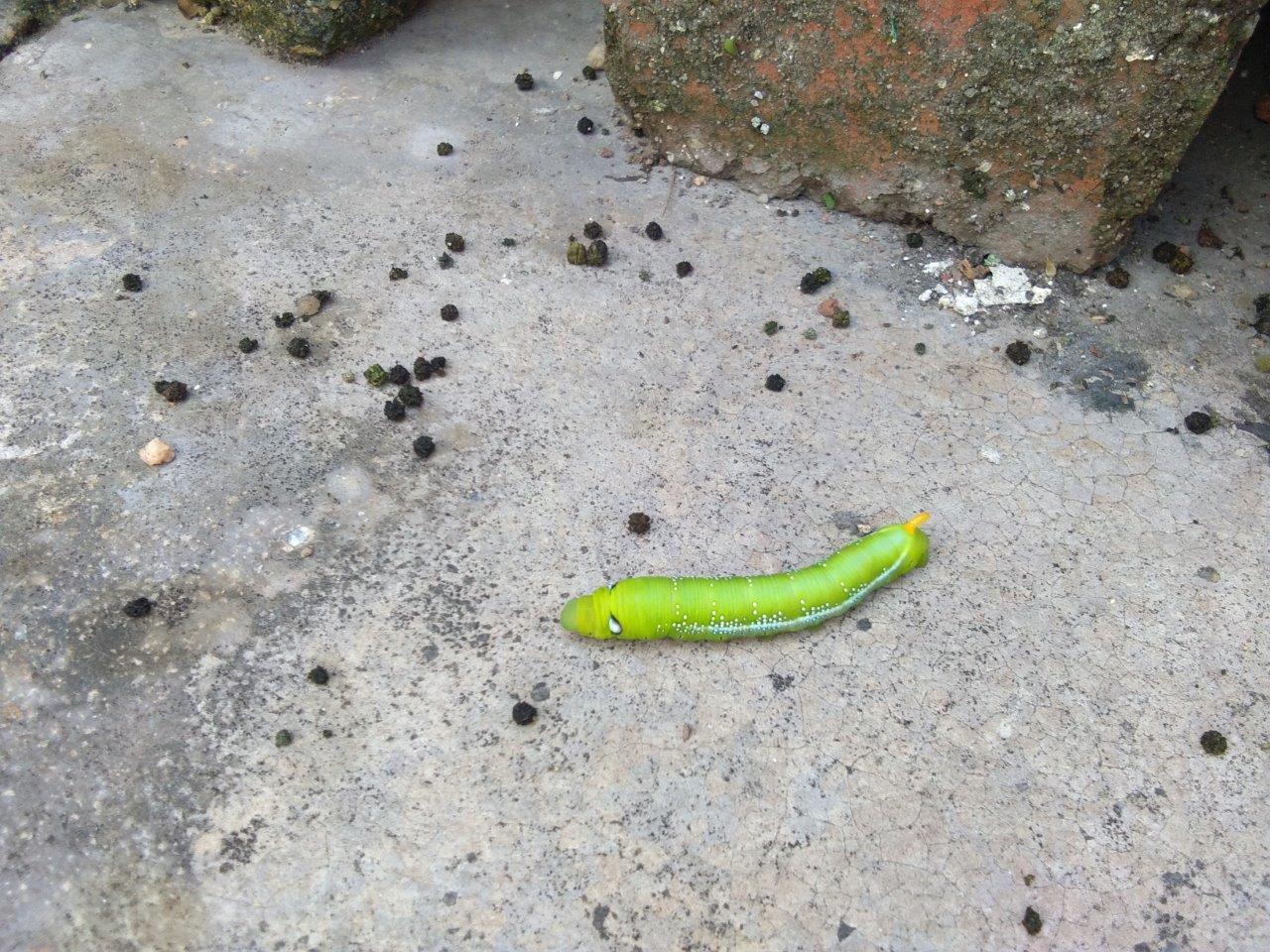
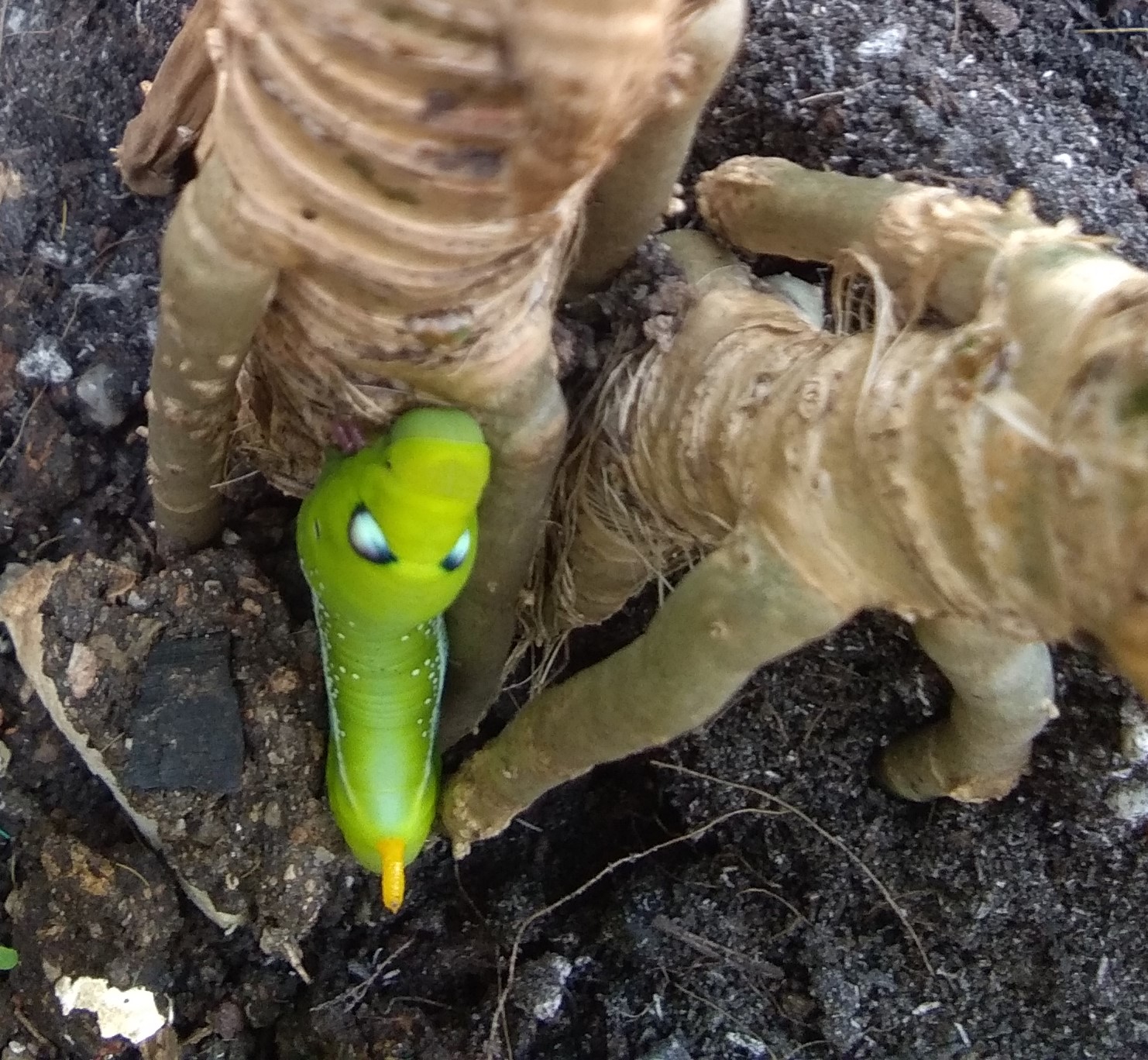
When provoked,
the caterpillar first straightens itself out to resemble an oleander leaf.
If the threat continues, it retracts its head, curls its upper segments to make the eyes larger and more prominent, giving the impression of a much larger animal.
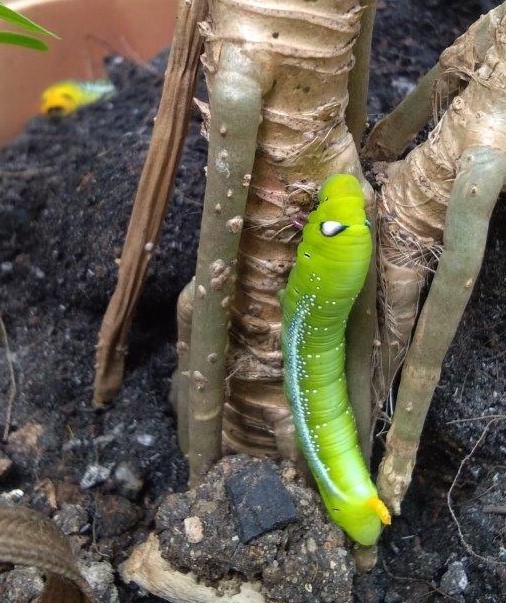
June 4
Caterpillars went MIA!
While I had a pretty good idea where Huey would be, Dewey and Louie could not be found despite numerous rounds of searching among the flower pots and the driveway.
Having read that Oleander Hawkmoths pupate amongst dry leaf litter and soil, I created a similar environment in readiness. Pupae are usually immobile and defenseless, therefore will conceal themselves in the environment, a cocoon or underground.
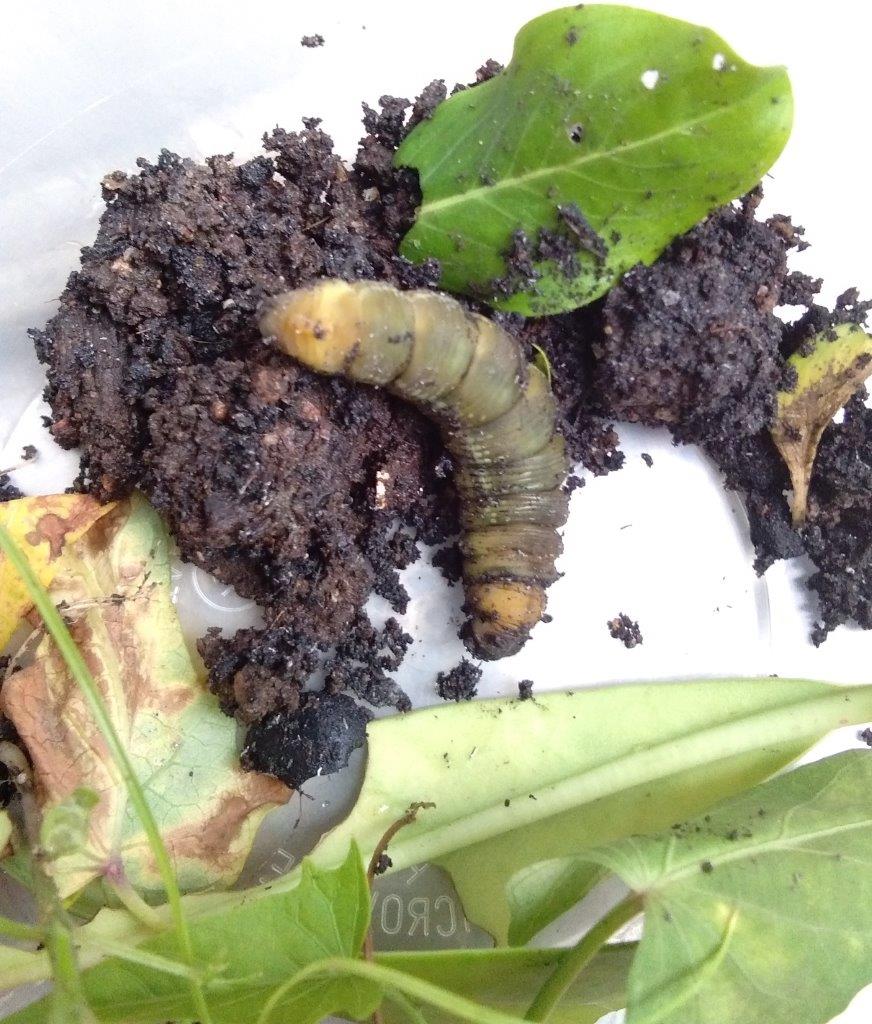
That evening, I dug Huey out, and brought him indoors for easy monitoring.
Close to pupating, Huey had changed from green to dark brown and appeared to have shrunk too.
2. Pupal Stage
June 5 – 6
Day 1, the freshly moulted pupa was cream in colour and had a wax-like appearance.
On Day 2, a prominent black line was visible from the tip of its head to the tip of its wing cases. Black dots also developed along the abdominal segments in a uniform manner.
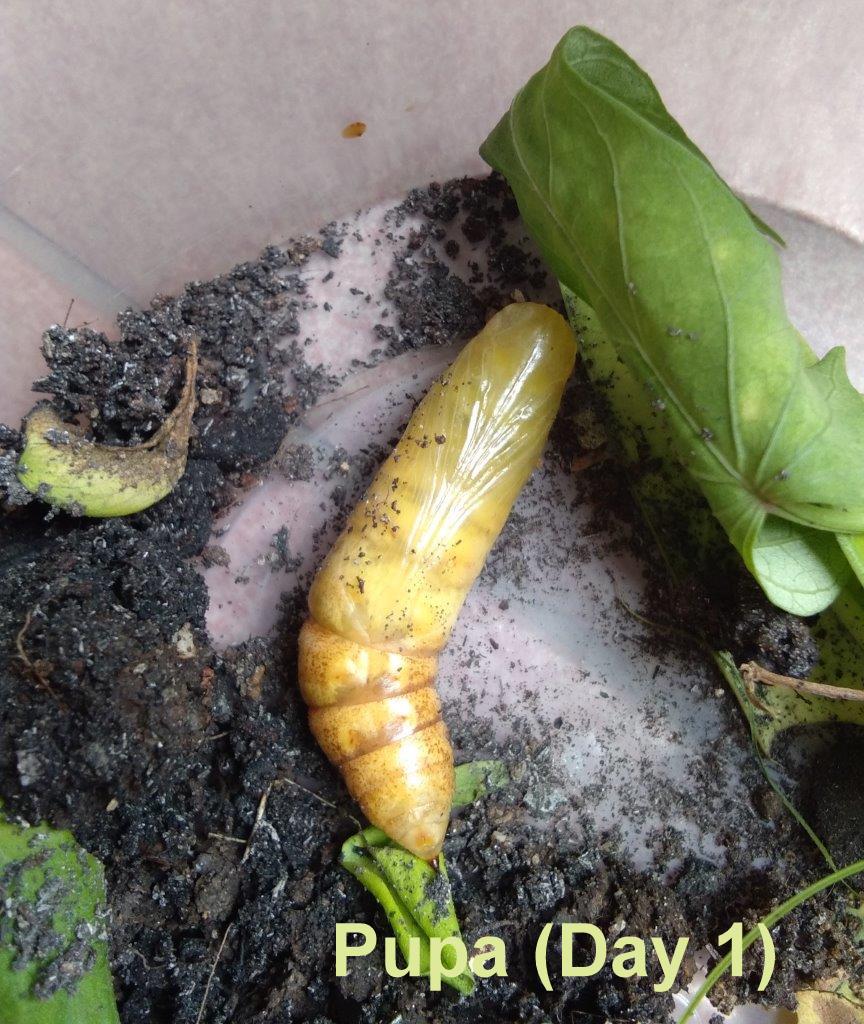
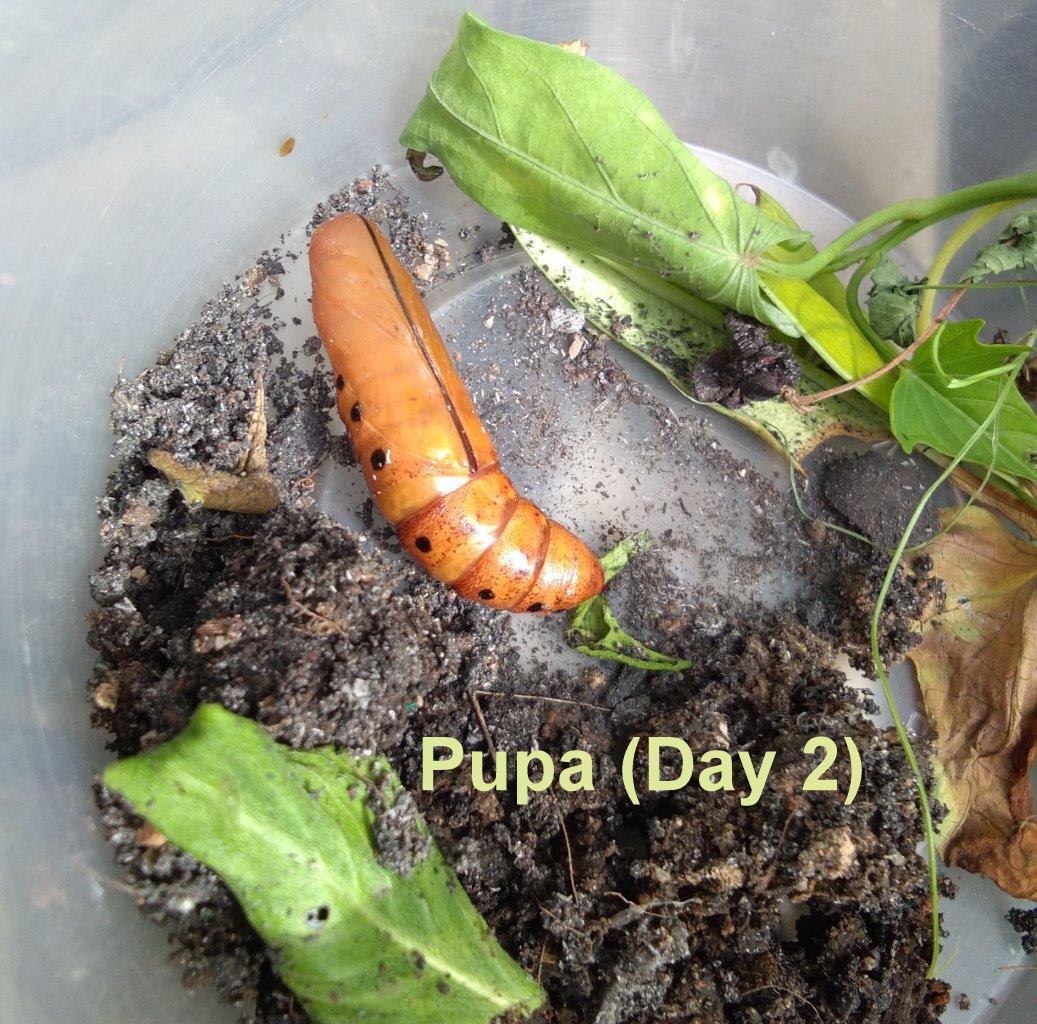
June 7 – 13
Pupation is the non-feeding stage and also the most boring part of the transformation process, as most of the changes occurs internally.
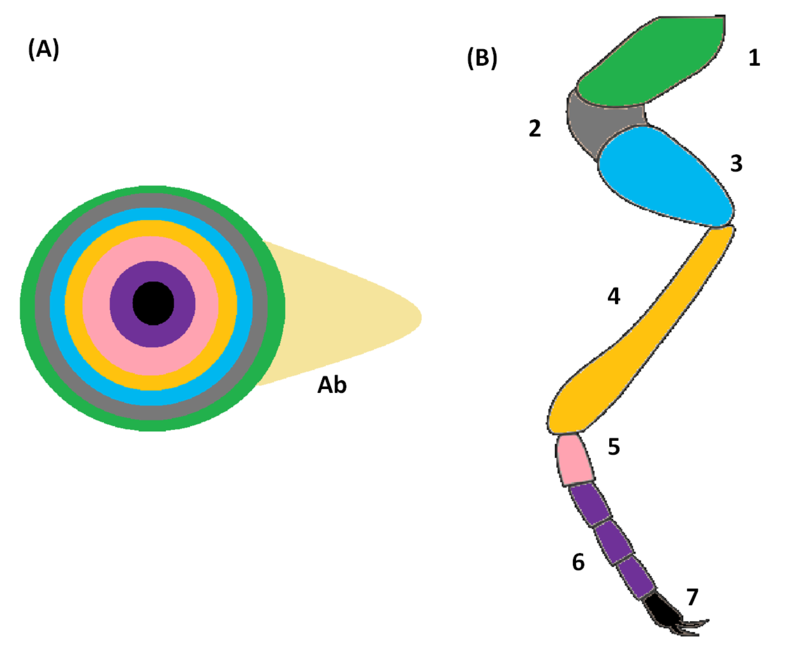
Imaginal Disc
During the pupal stage, many larval structures are broken down, and adult structures, including the imaginal discs pair, undergo rapid development. Each disc everts and elongates, with the central portion of the disc becoming the distal part of whichever appendage it is forming: the wing, leg, antenna, etc.
Source : Wikipedia, the free encyclopedia
Externally, pupa Huey continued to darken as it hardened to a light wood brown over the next few days.
June 14
By Day 10, pupa Huey had turned a darker shade of brown with patches of black predominantly at the wing case, revealing the wing pattern more clearly.
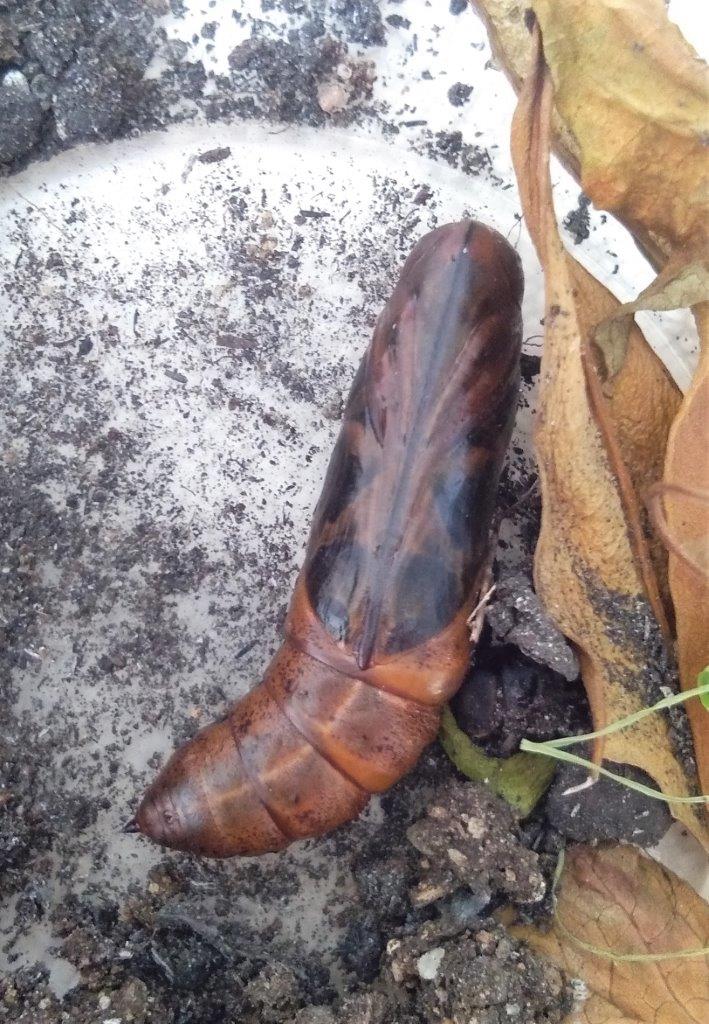
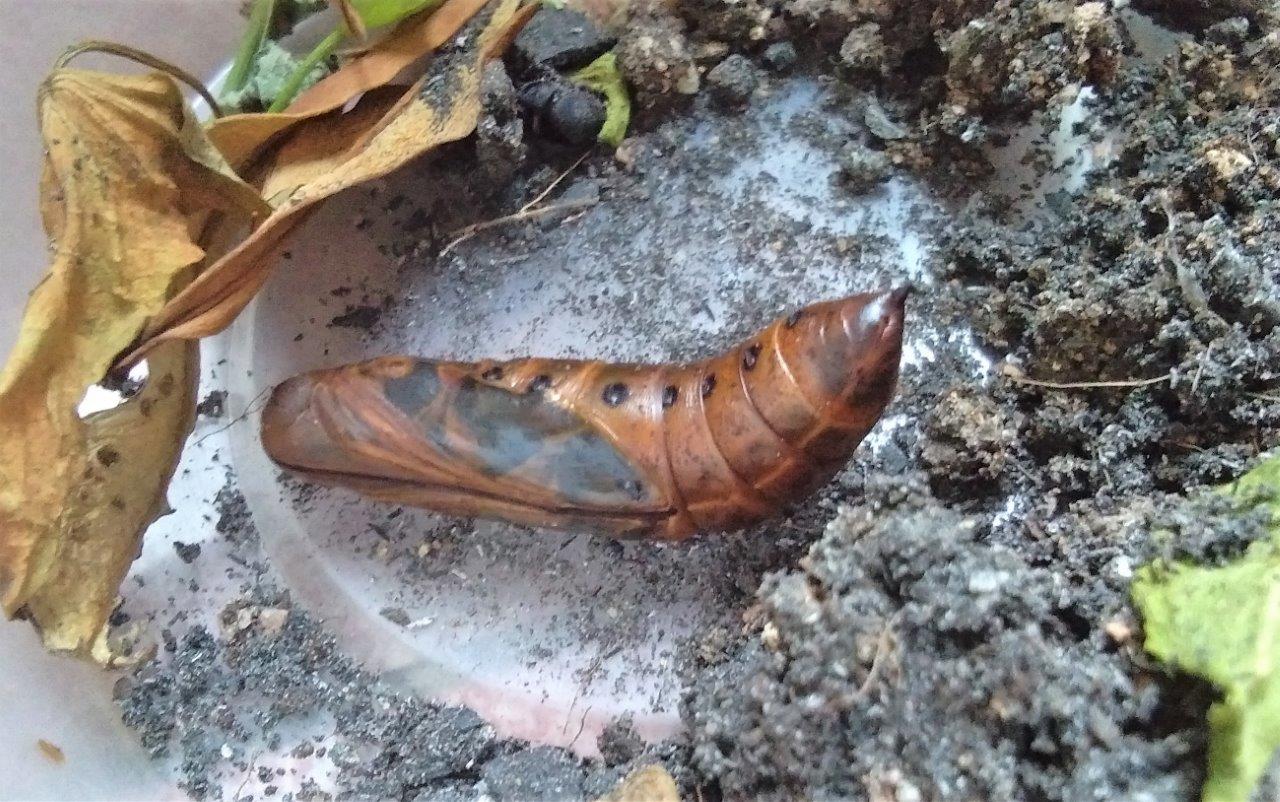
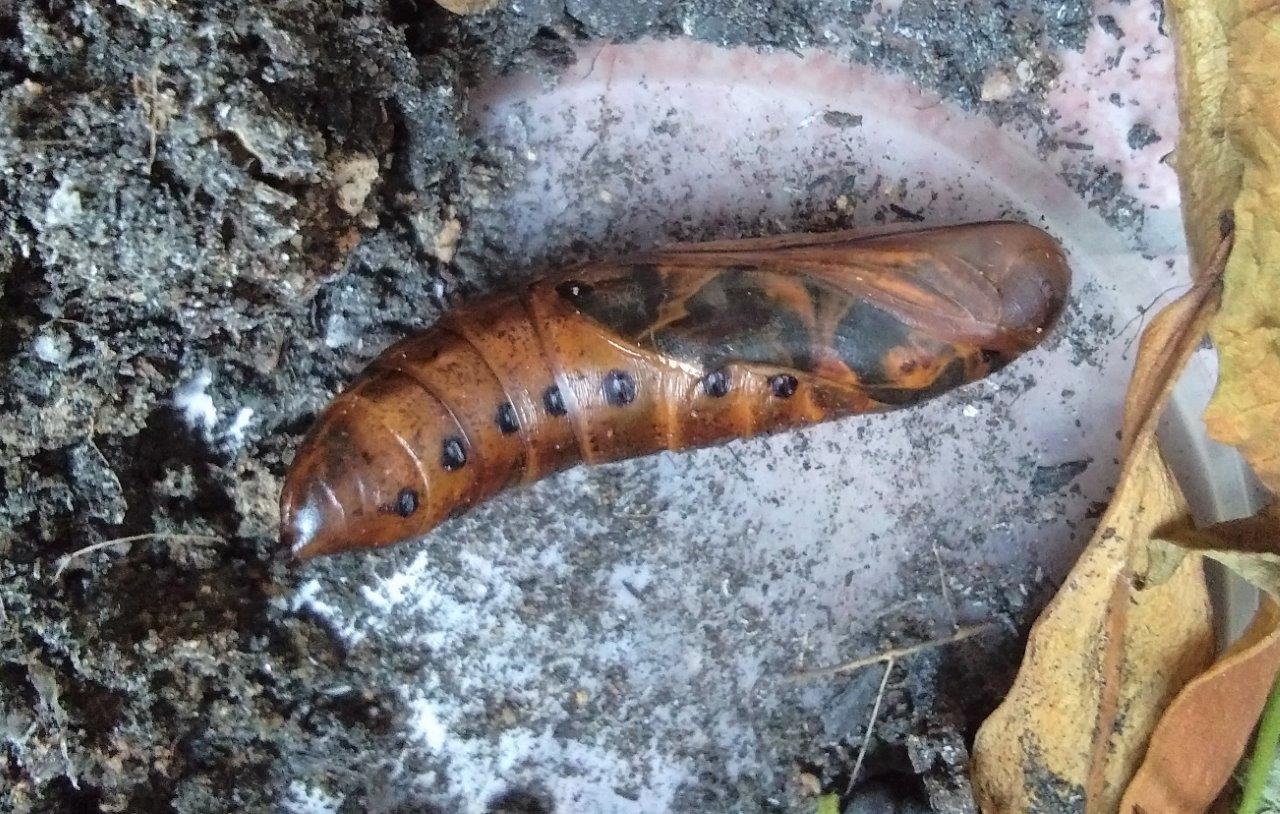
Huey was particularly active that day, giving violent wriggles whenever disturbed.
June 15
Day 11 – The pupal case had split open with no sign of life. Devastated, I frantically researched possible causes on why Huey did not hatch.
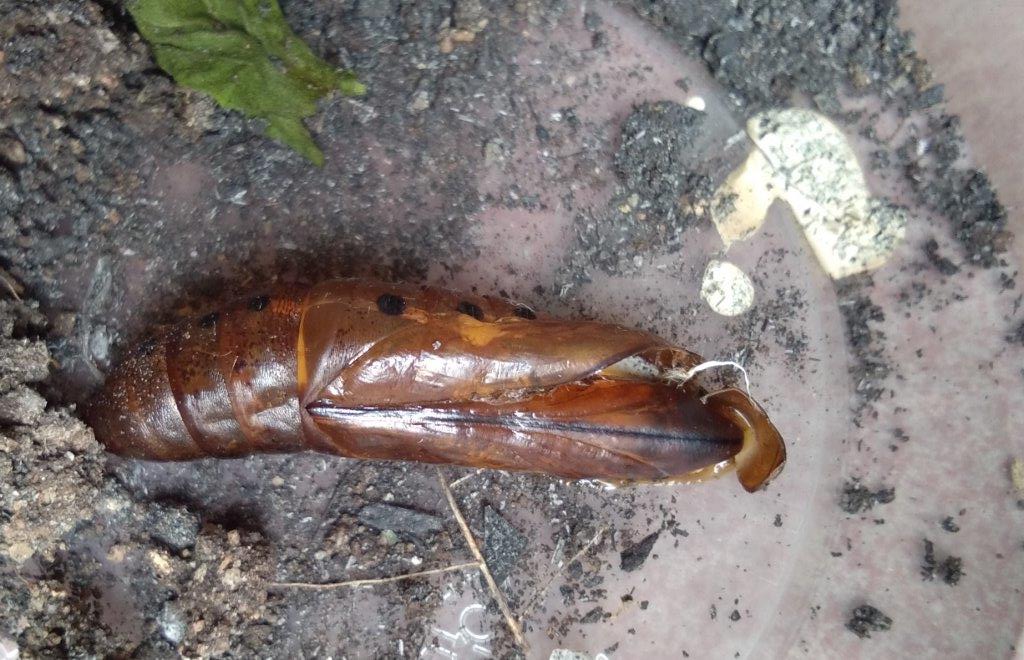
I was convinced it did not hatch, as sources on the web cited 19 – 22 days to transform from pupa to adult.
I couldn’t have been more wrong.
3. Adult
June 16
While moving furniture in the hall, a fluttering of wings alerted me to a possible happy ending for my science project.
Barely containing my excitement, I followed the day-old Oleander Hawkmoth into the bedroom, where it was resting on the bed. It stayed calm and still, allowing me take a closer look and photograph it.
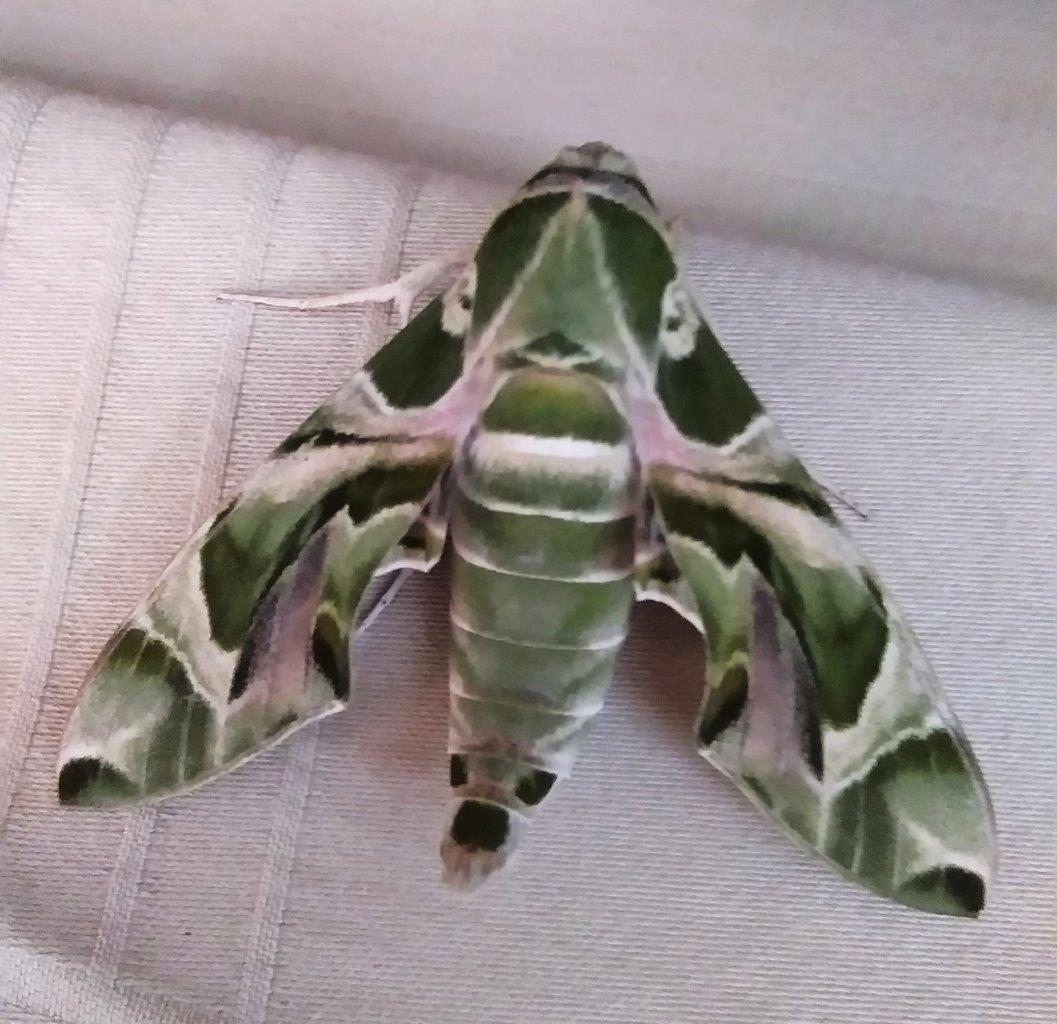
The wings are a collage of green hues ranging from light green to olive to dark forest green, with a hint of pink on the inner edges.
Also called Army Green moth as the patchwork of green resembles camouflage fatigues.
Amazingly, Adult Huey did not move for 7 hours. I found out later that Oleander Hawkmoth rests by day, emerges late in the evening but do not take flight until just before dawn to feed by drinking nectar from scented flowers such as honeysuckle, jasmine and petunia.
I also learnt to differentiate between the male and female. Huey is an adult male and has the potential to achieve a wingspan of 10 cm.
By 6.00pm I decided to release Huey among the plants at the back patio. I tried putting him on a leaf where he promptly fell off. Subsequent attempts were equally futile. As Huey seemed in no hurry to fly off, I happily passed an hour getting my fill of pictures and videos.
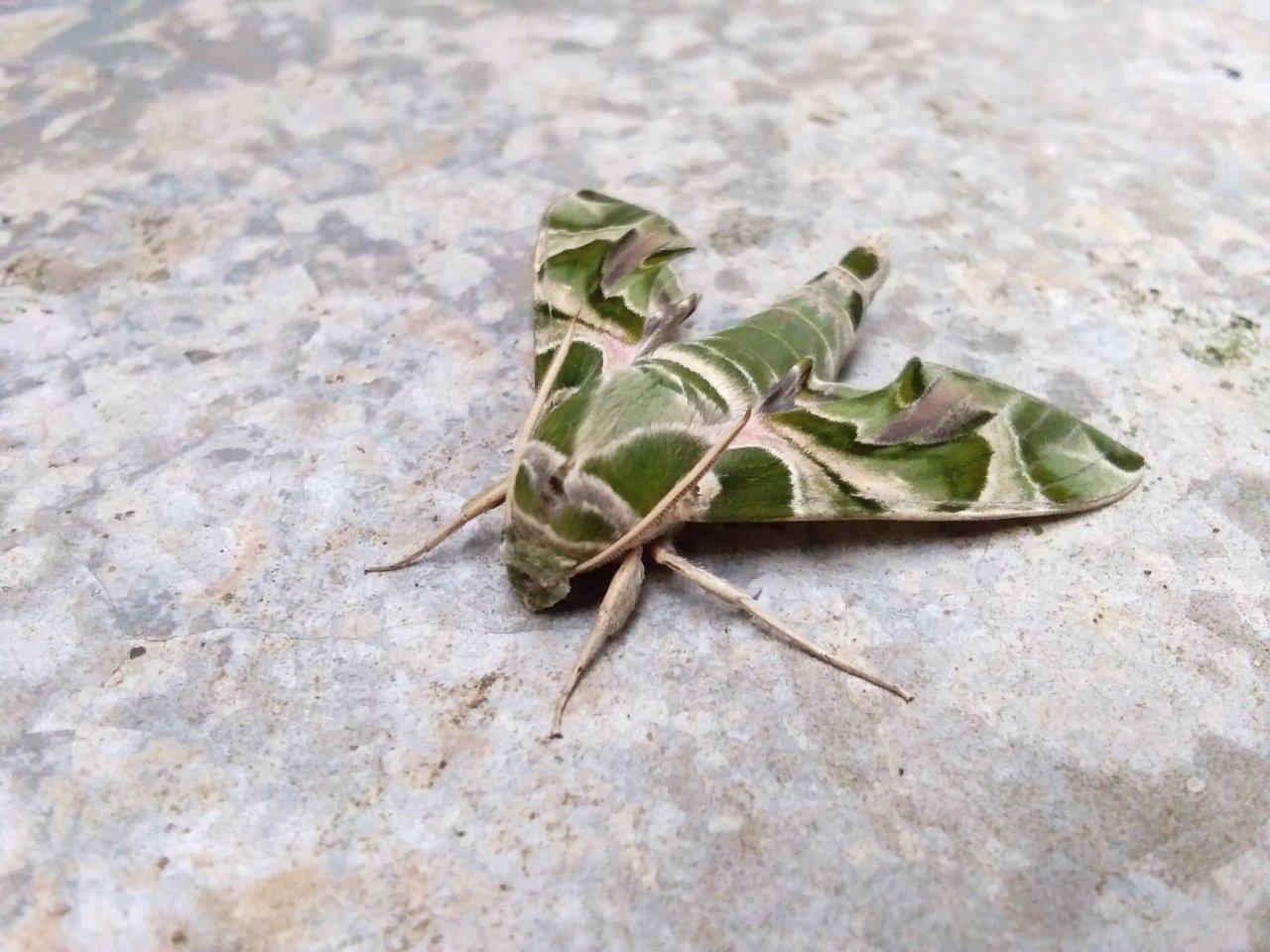
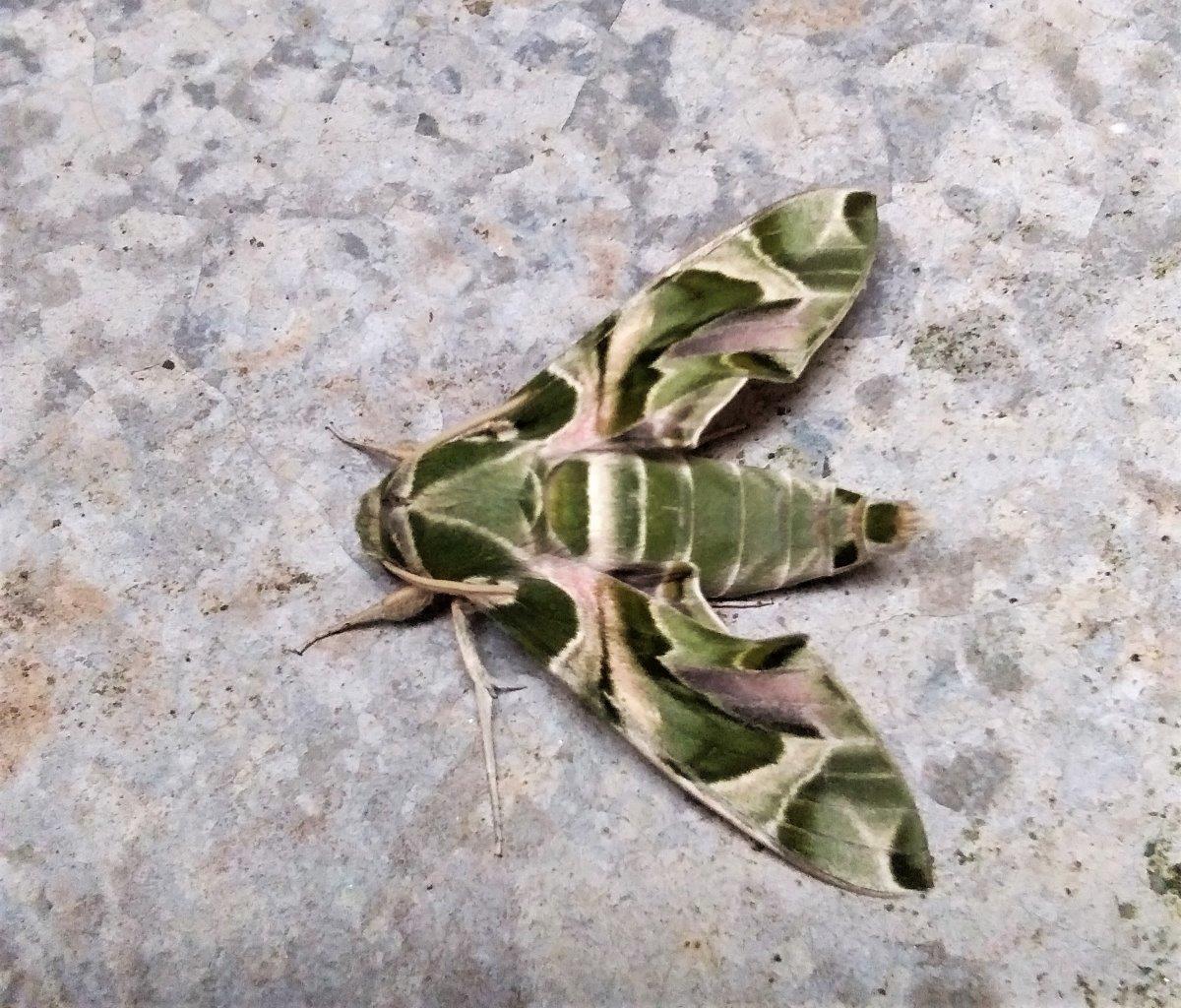
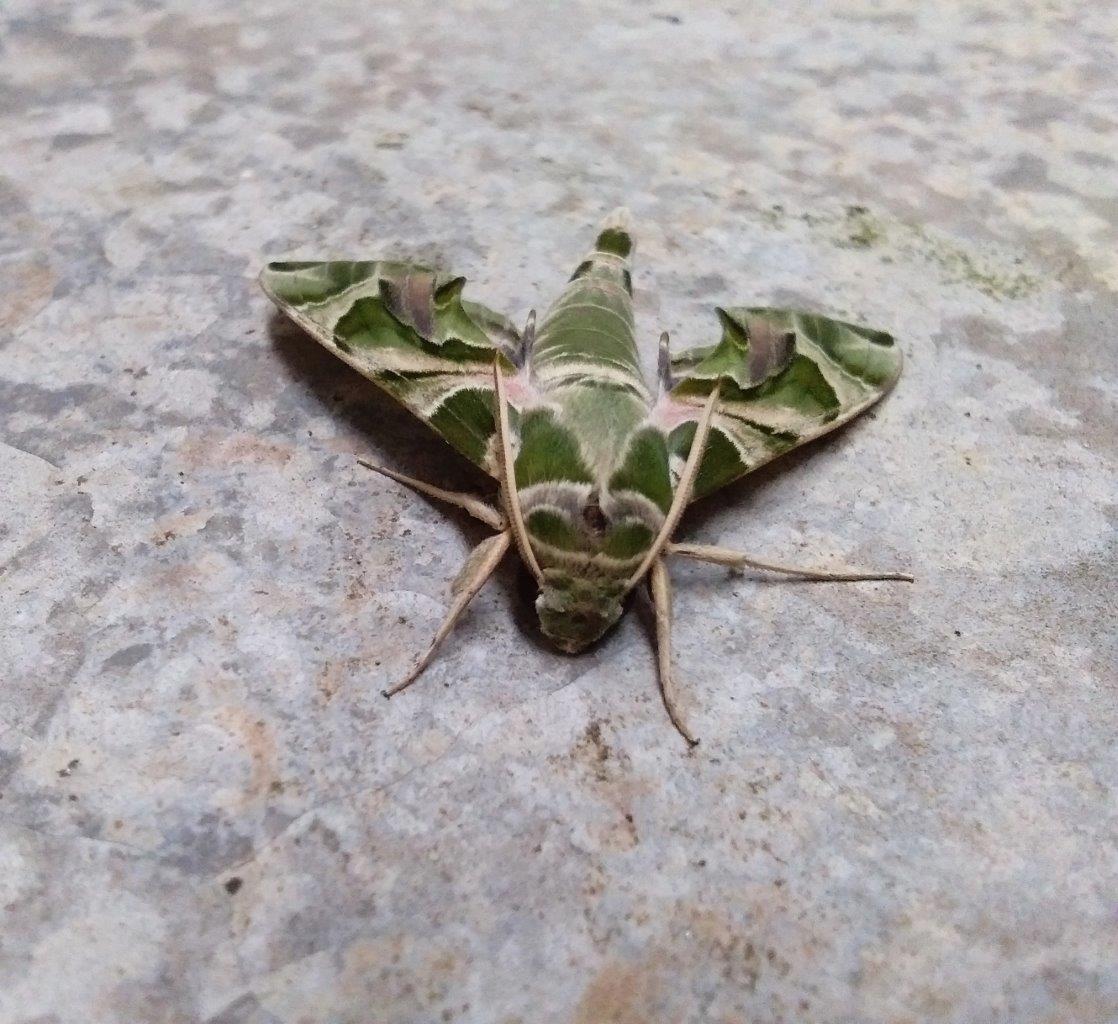
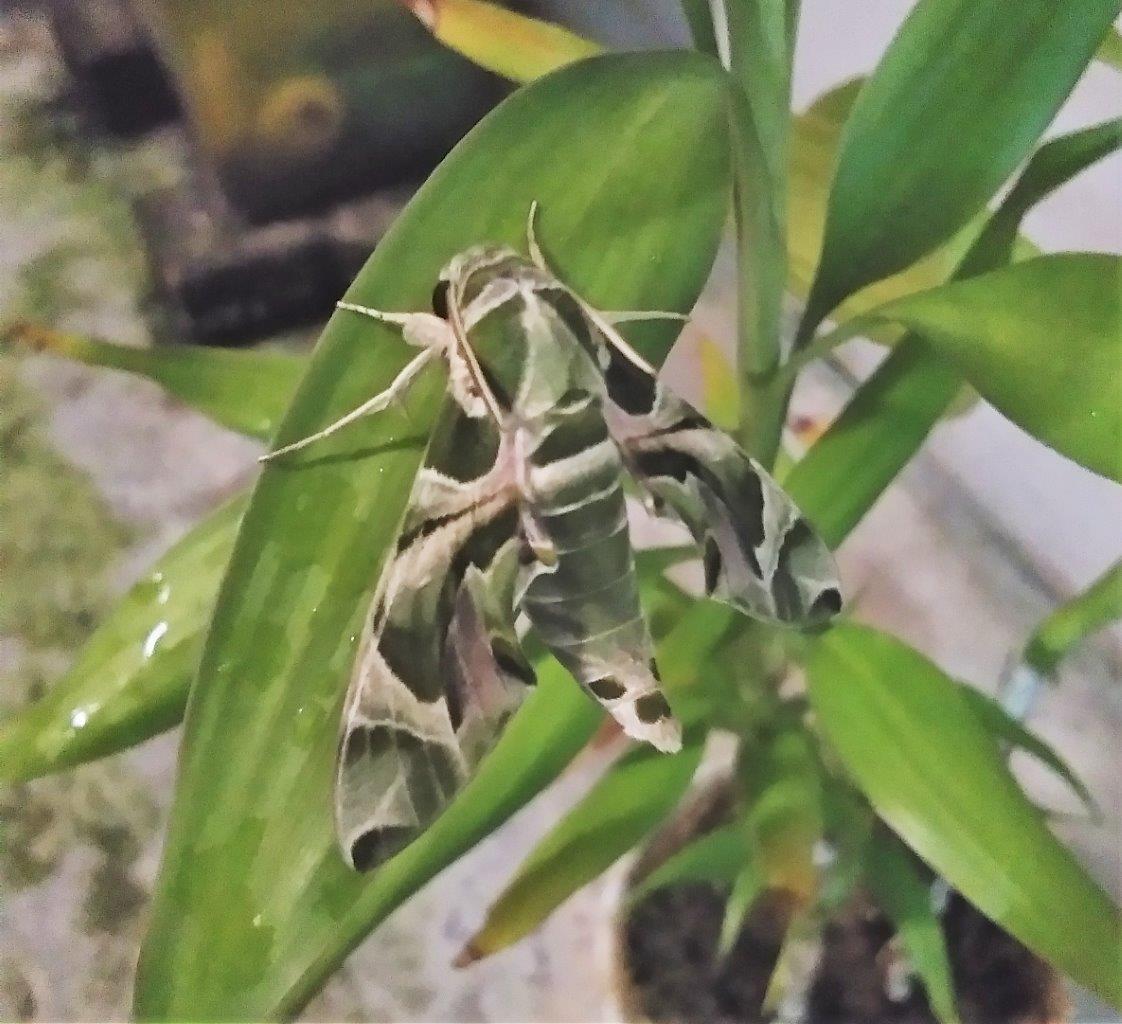
I saw Huey for the last time at 8.00pm, perched on a leaf.
Having survived the metamorphosis process with one successful hatching is very encouraging. My new pastime includes lurking around the garden, peering under leaves on the look out for eggs, for a more complete documentation of the four stages, and not miss the adult moth emerging from the pupal case. A Big Thank You to Jan for convincing me to Just Do It, and Mei Ying for helping me to identify the host plant.

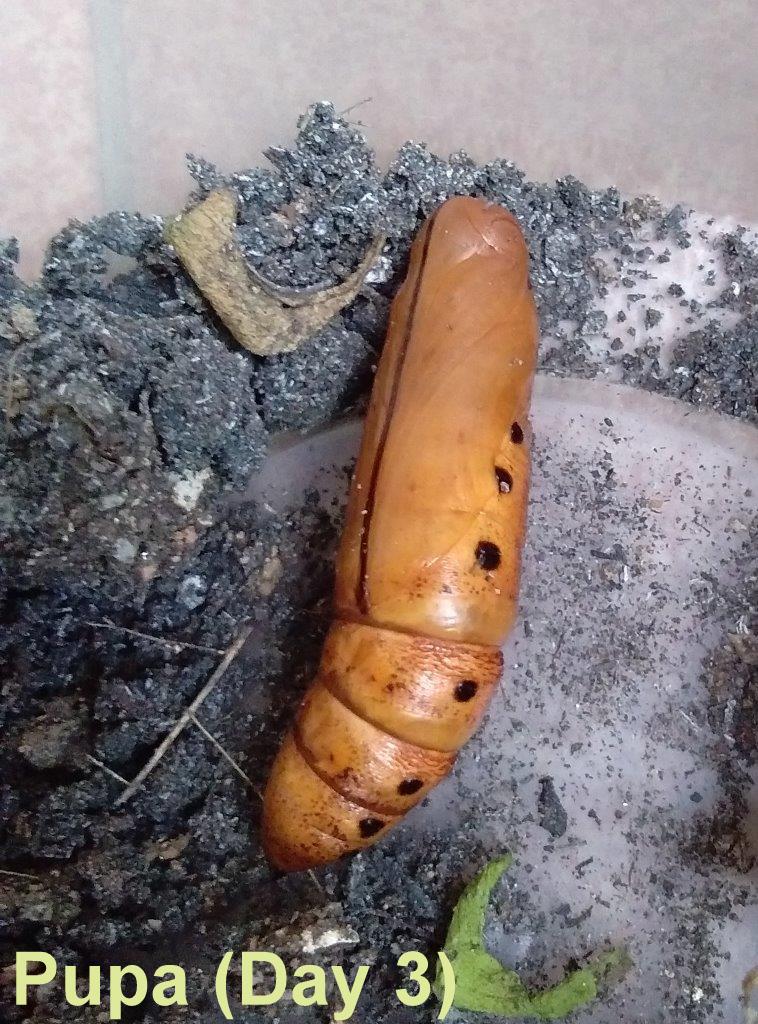
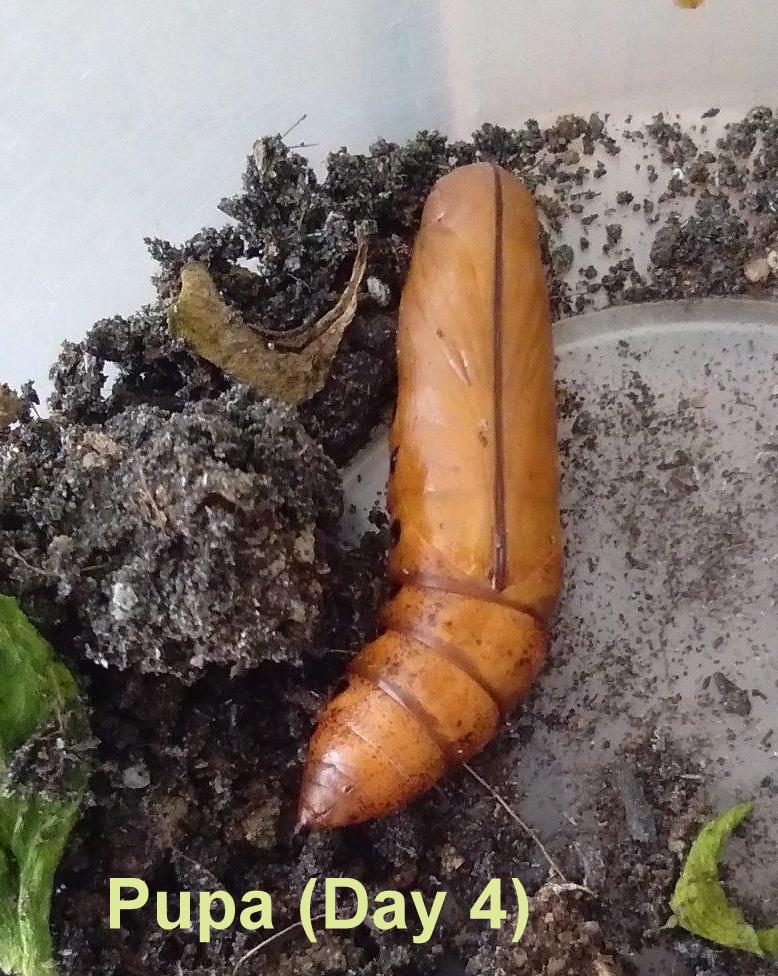
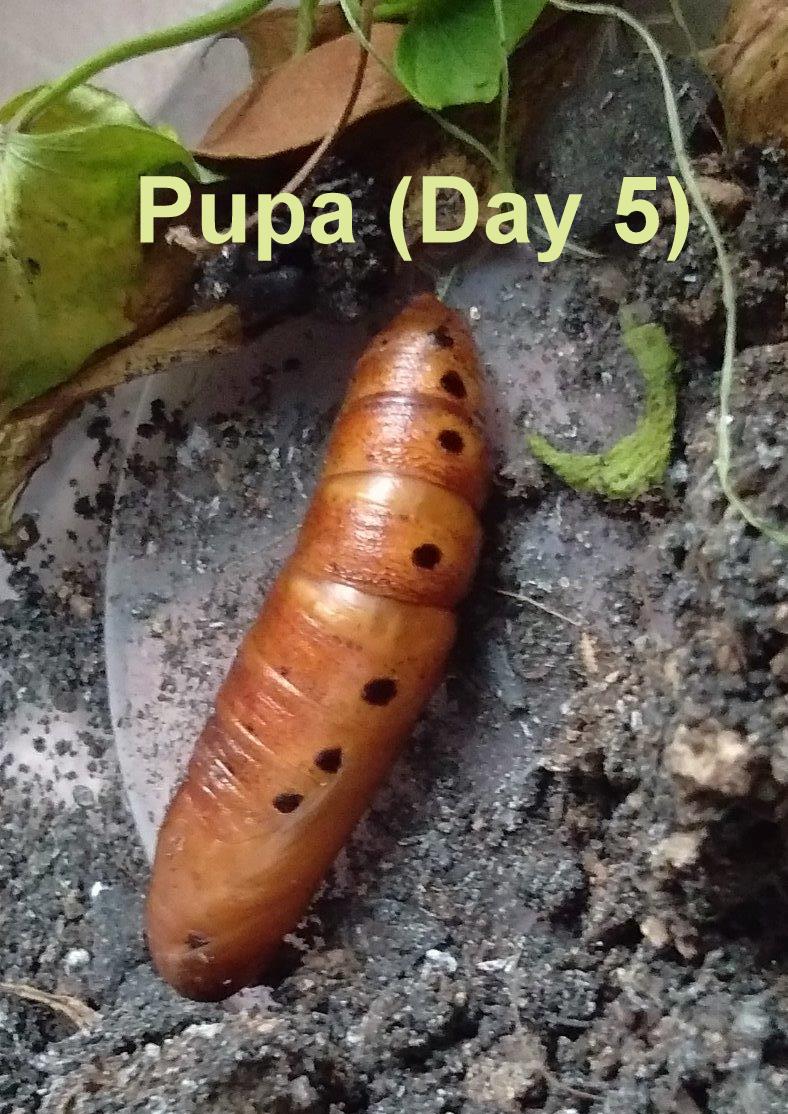
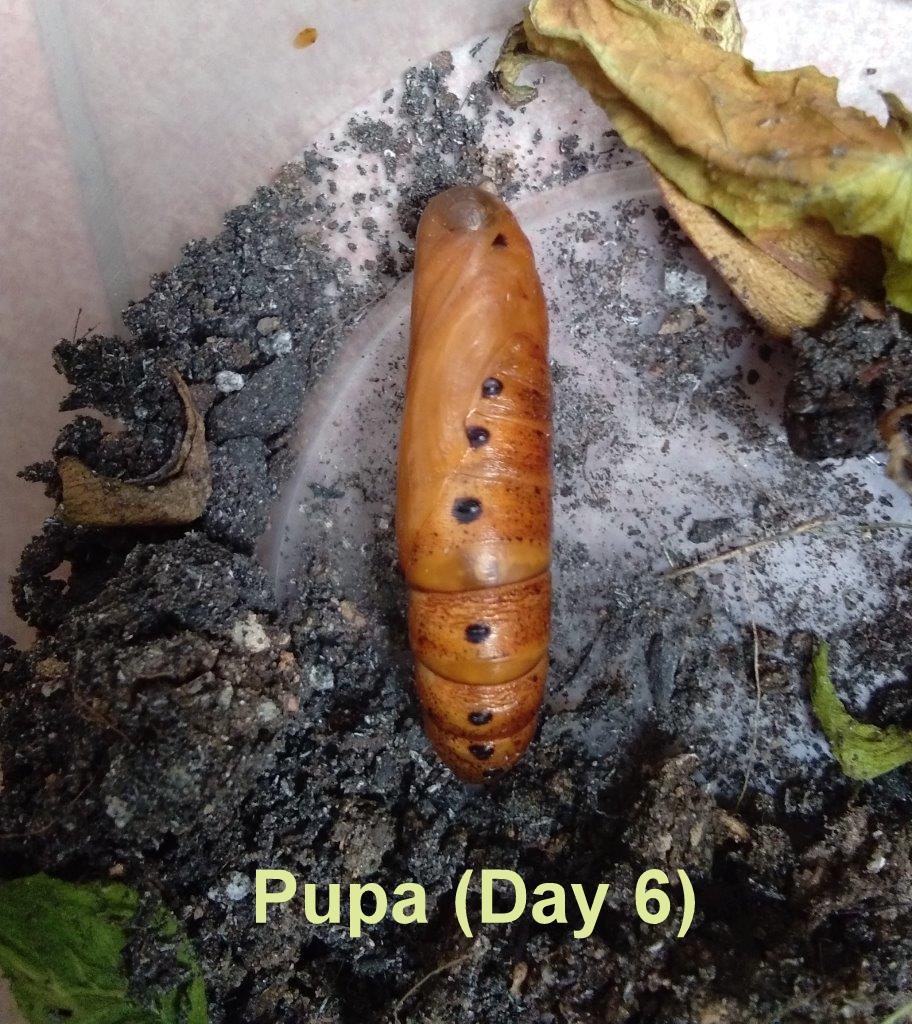
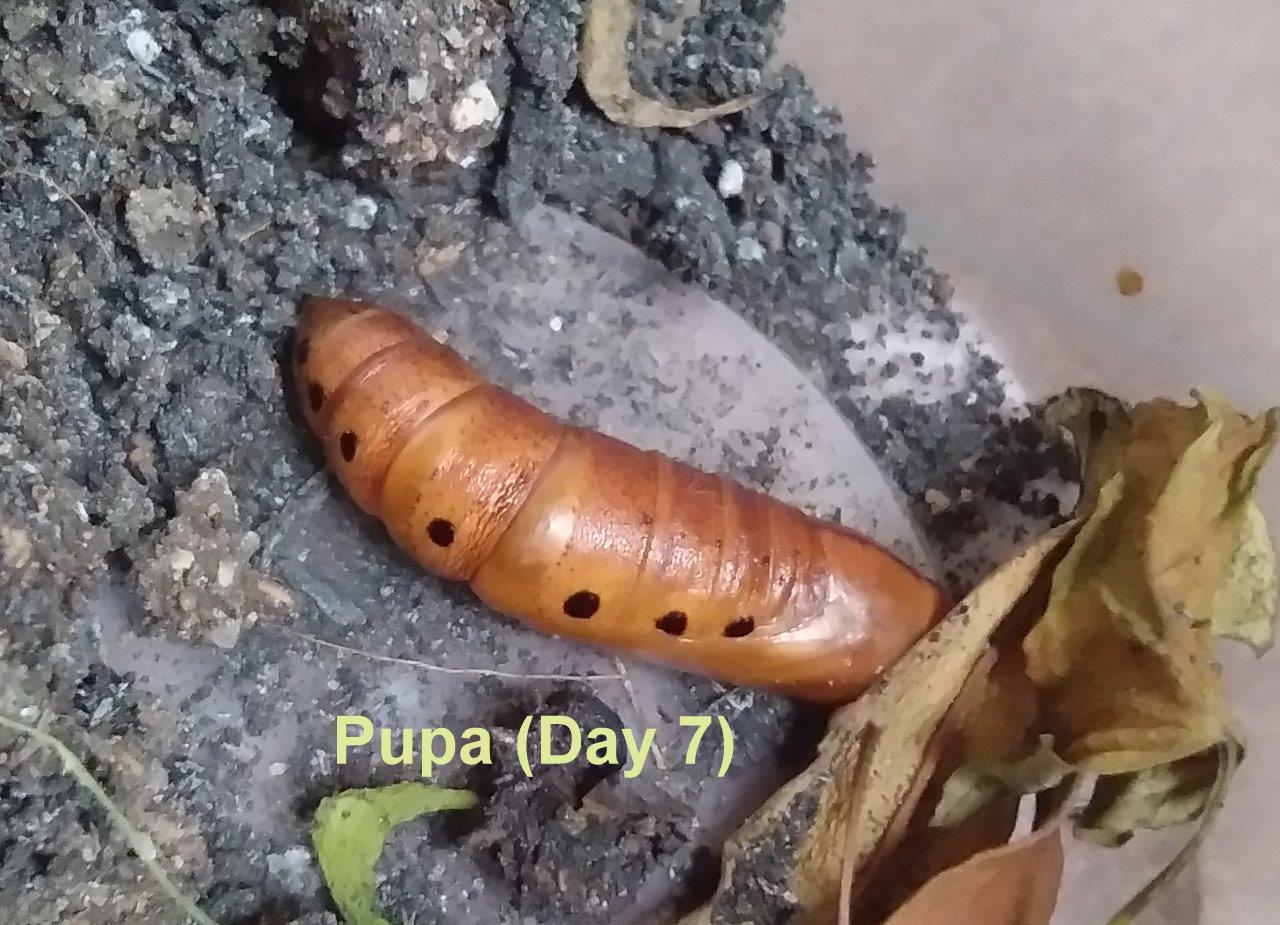
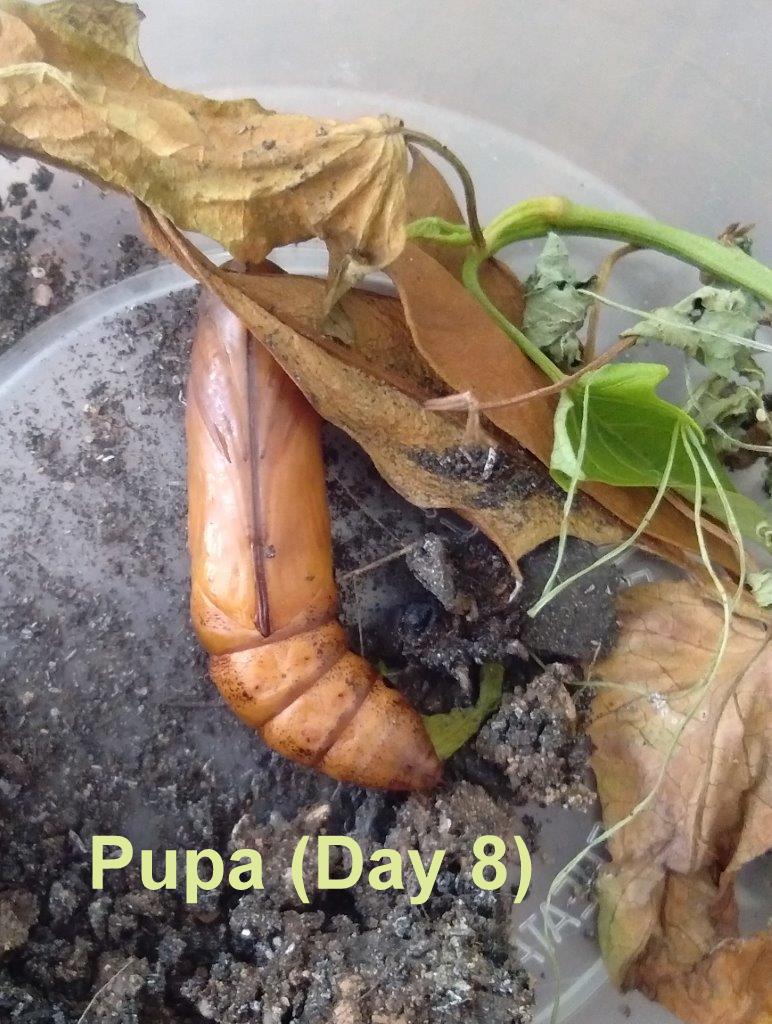
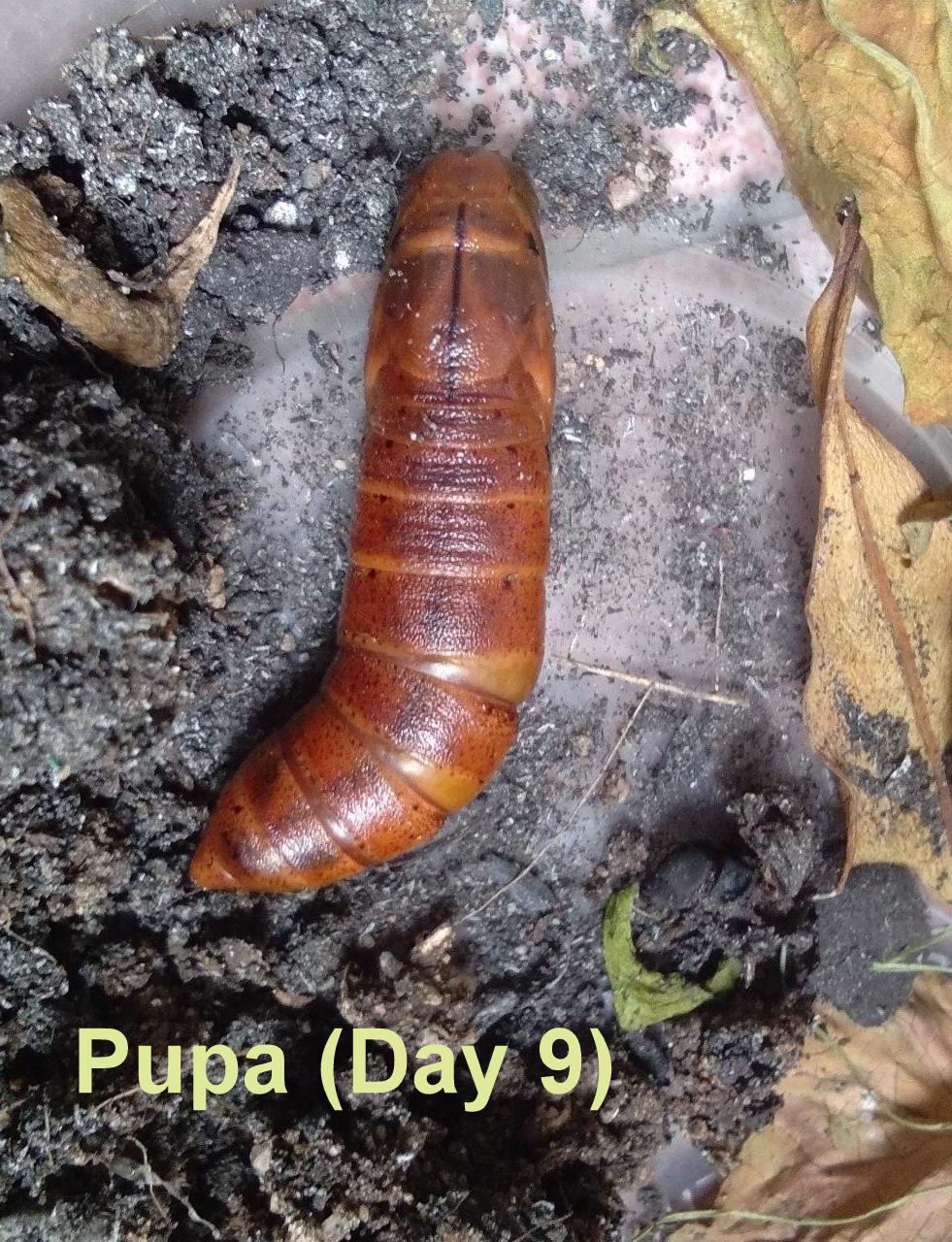
What a nice report! Big smile here 🙂
LikeLiked by 1 person
Your quote ‘sealed the deal’, pushing me to commit to the report! Janstu
LikeLike